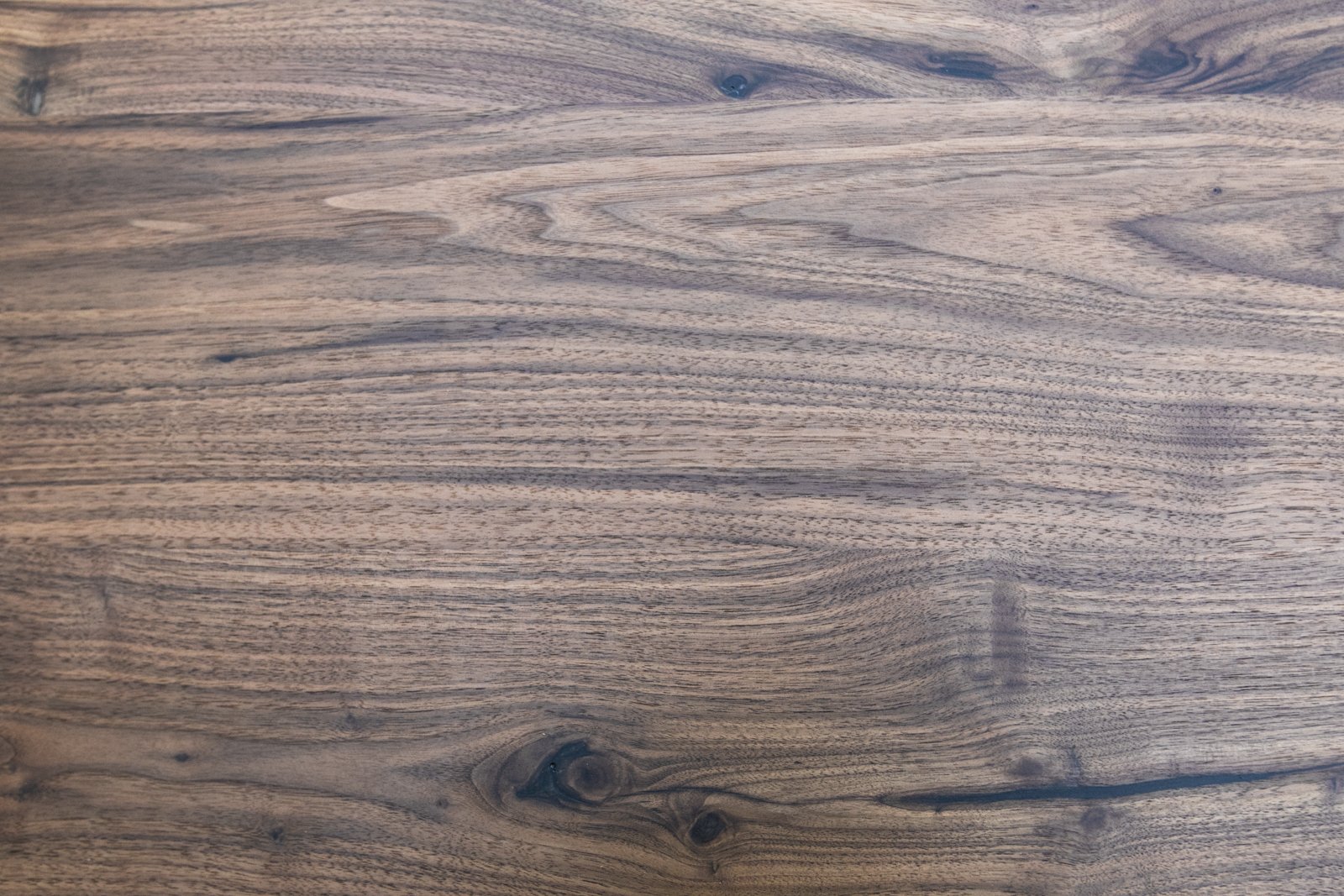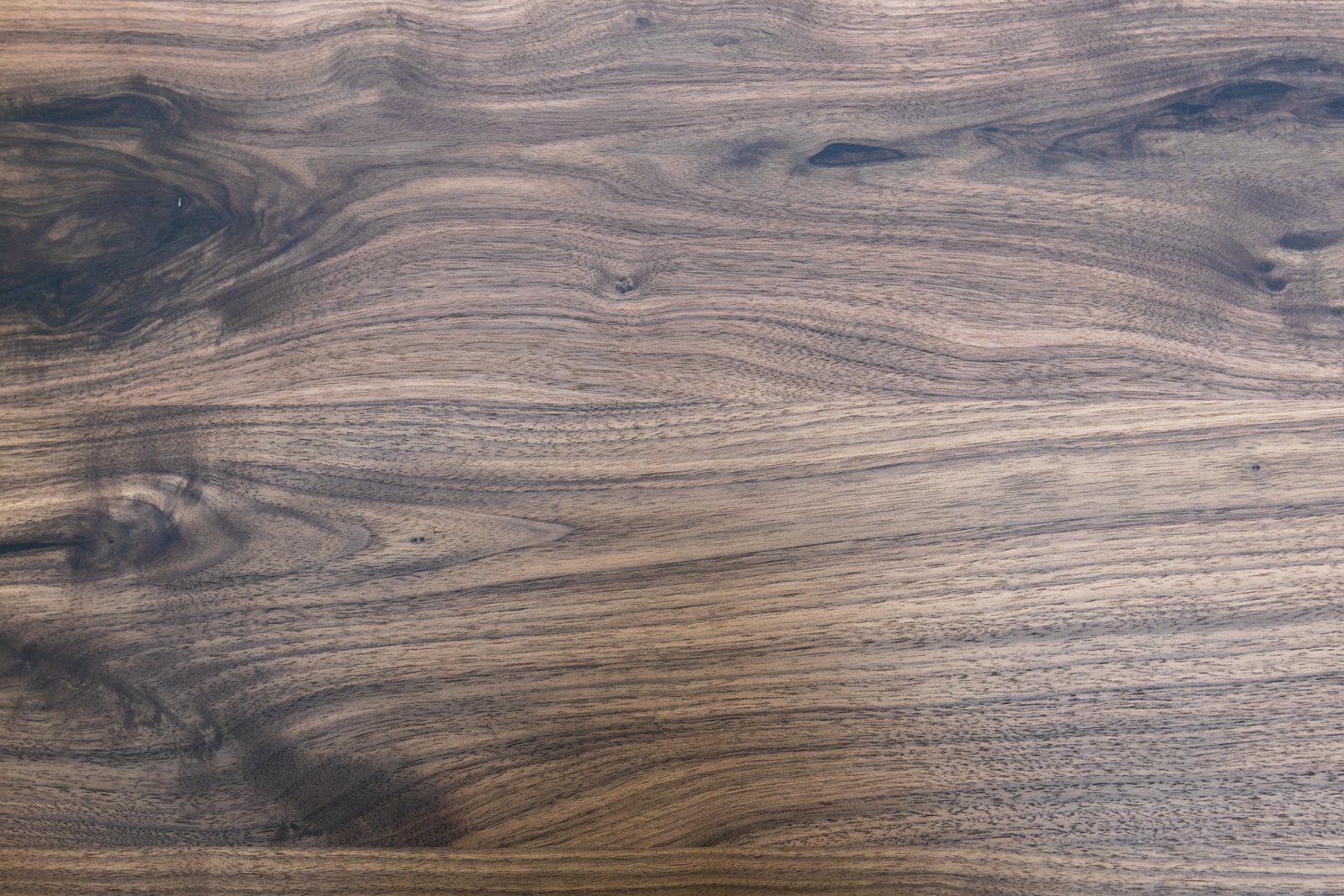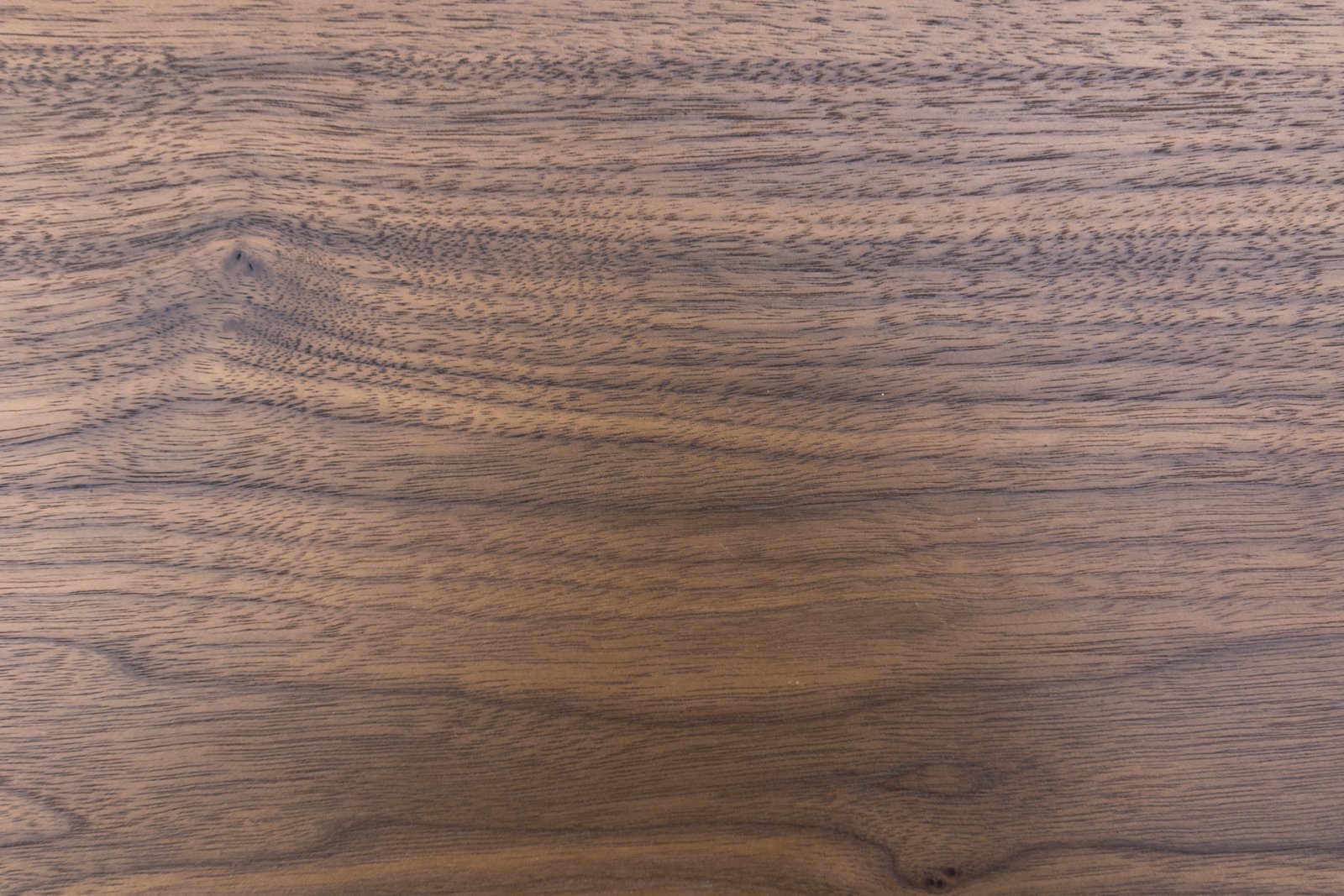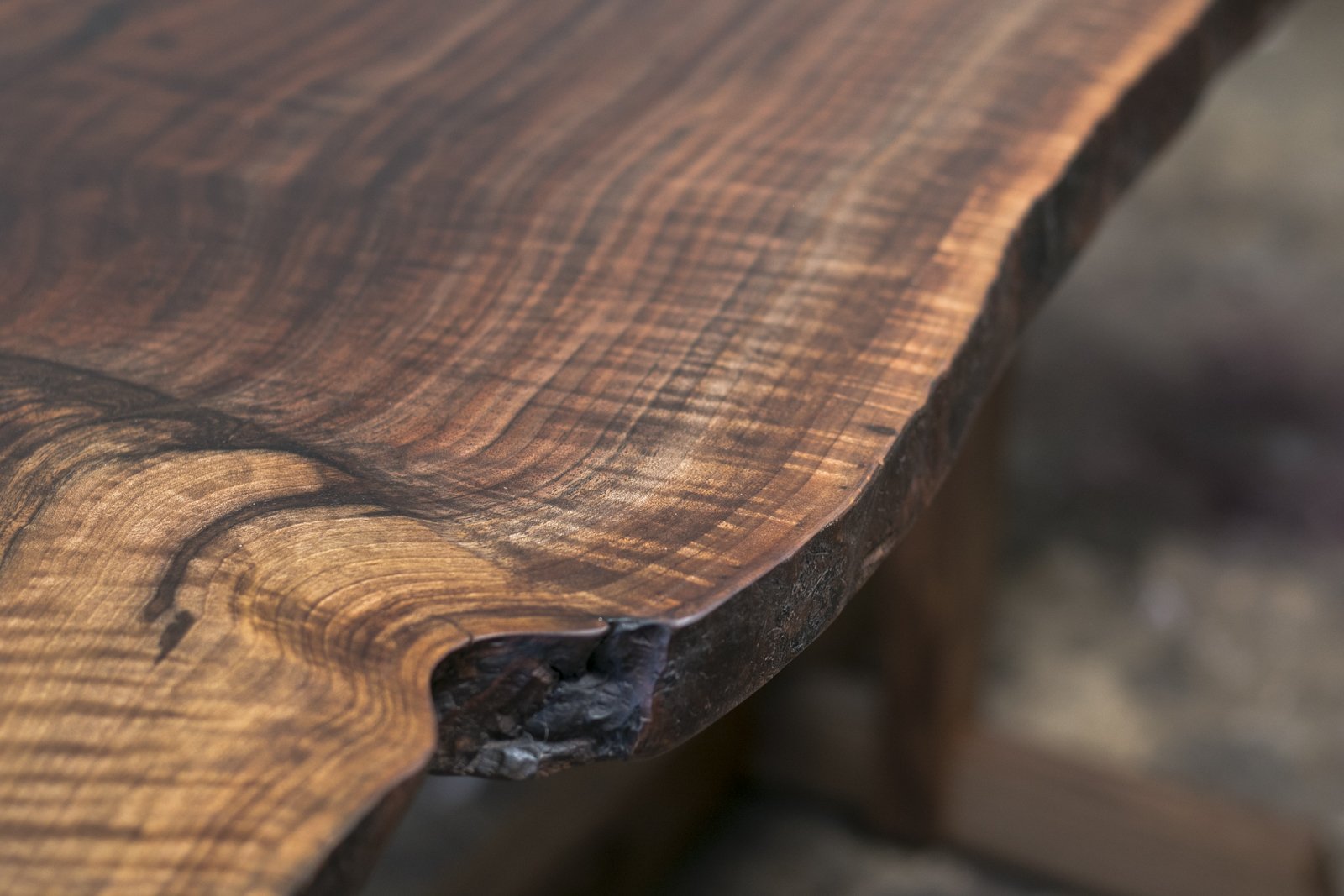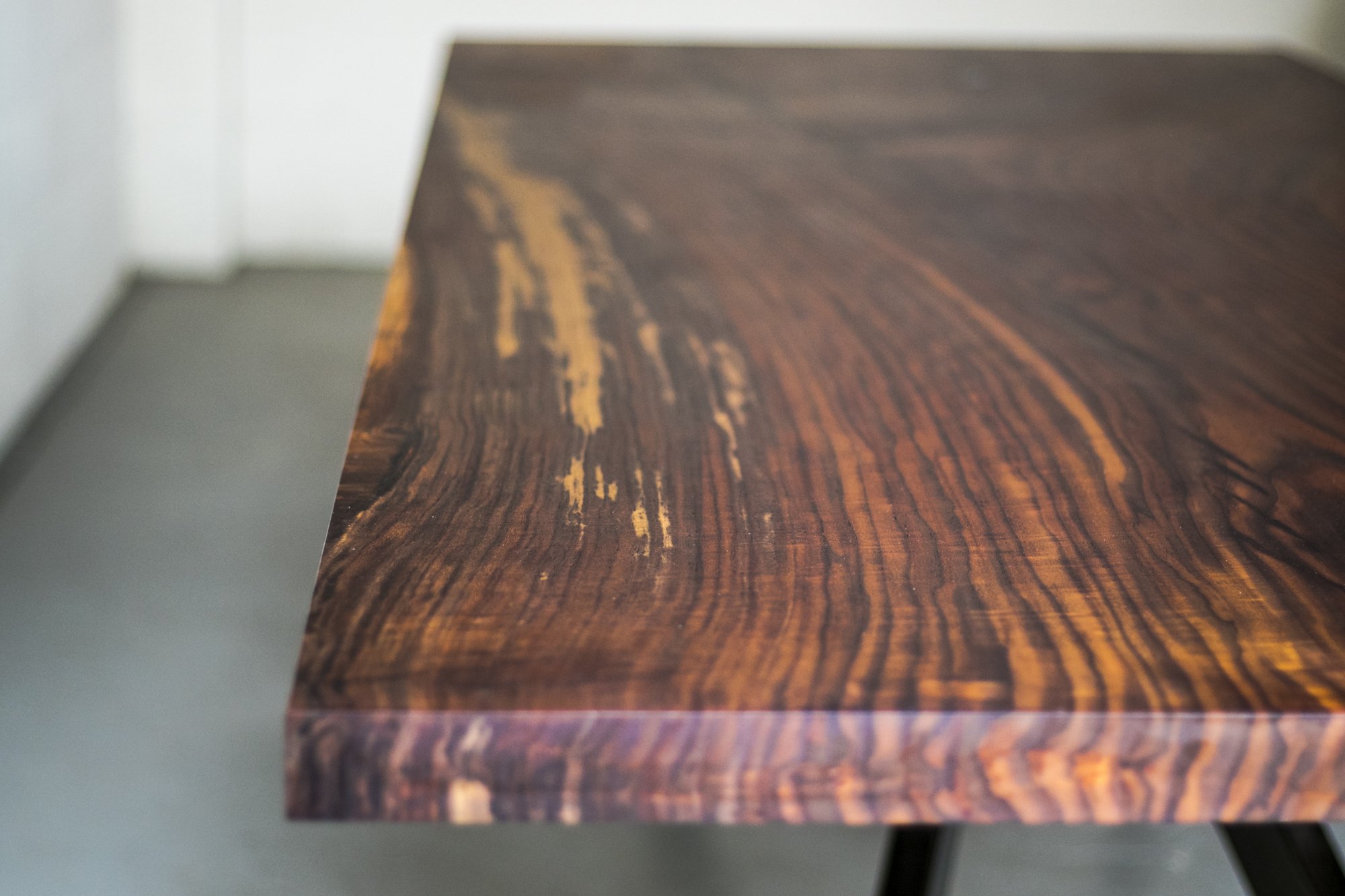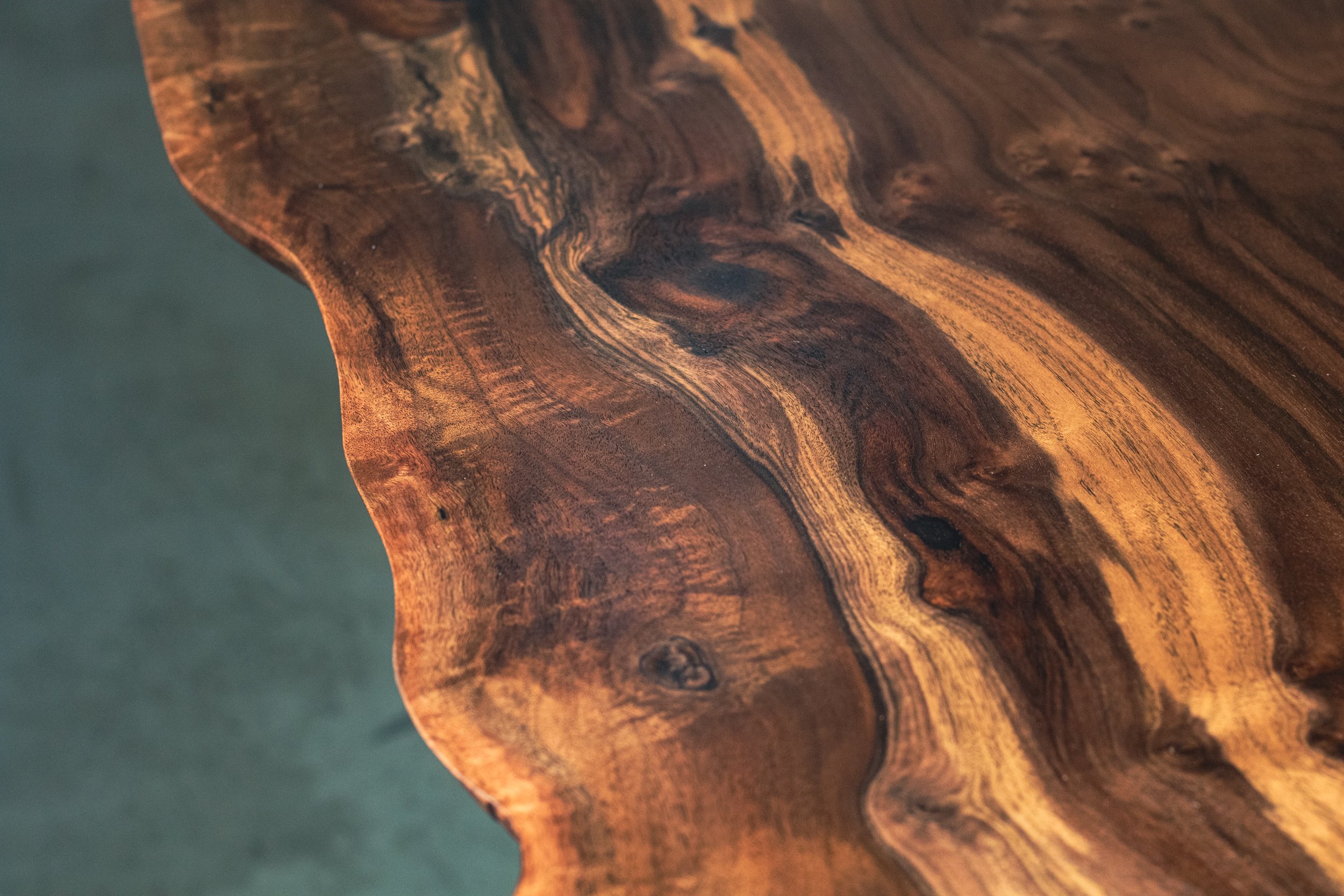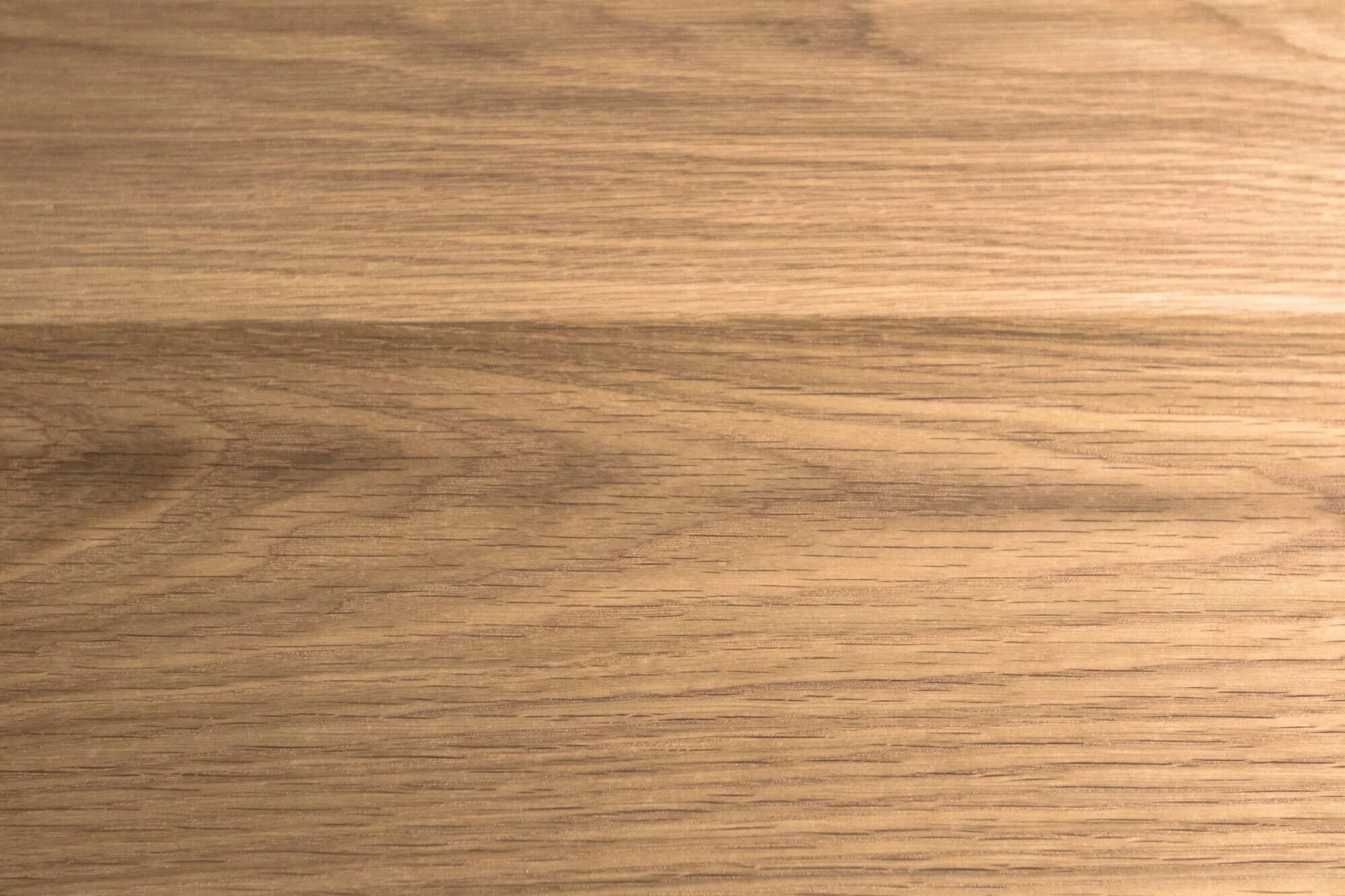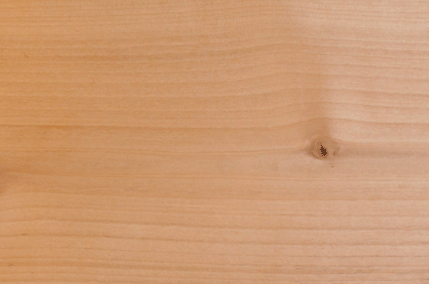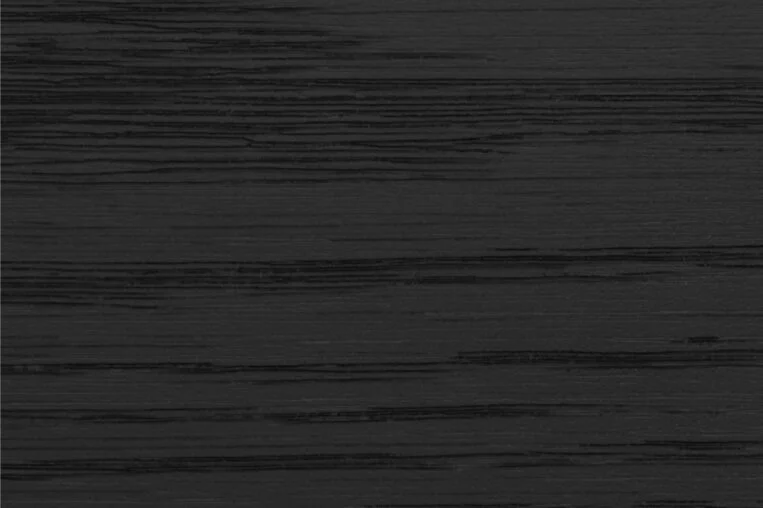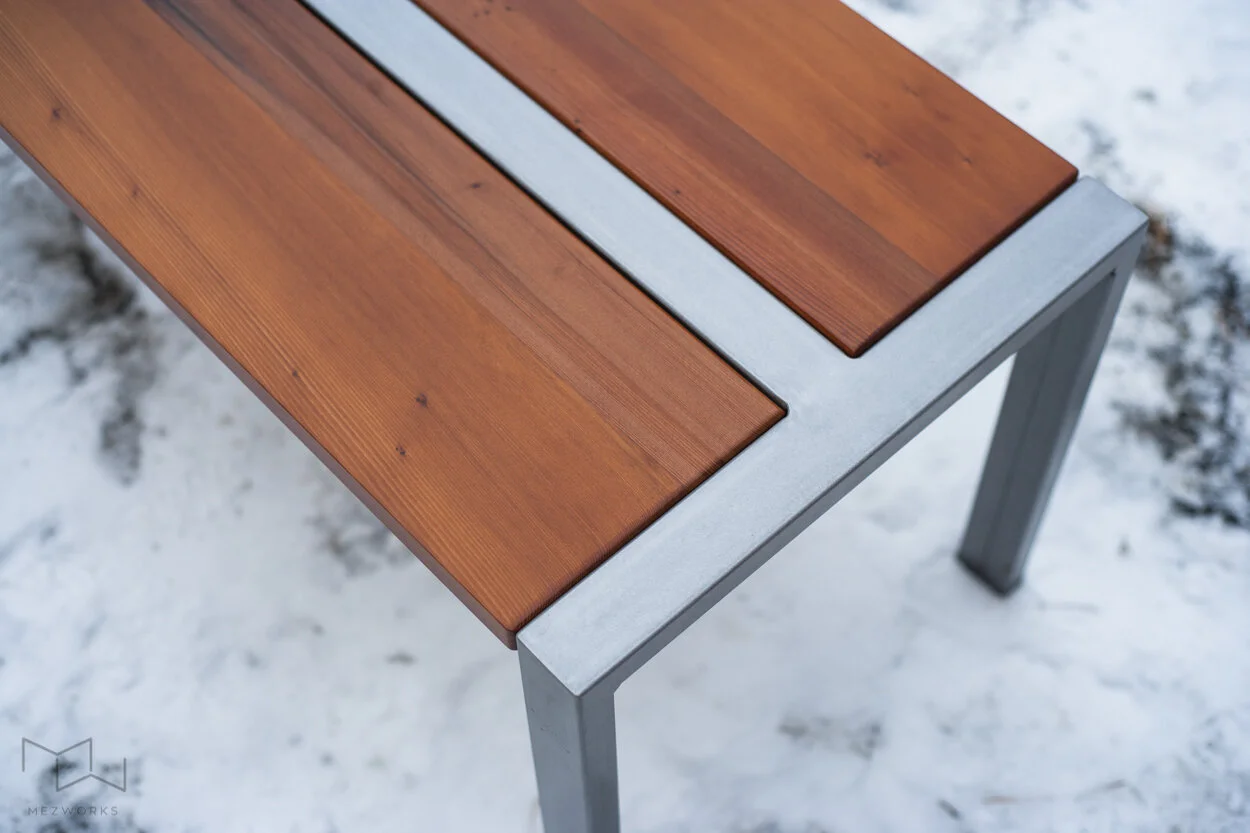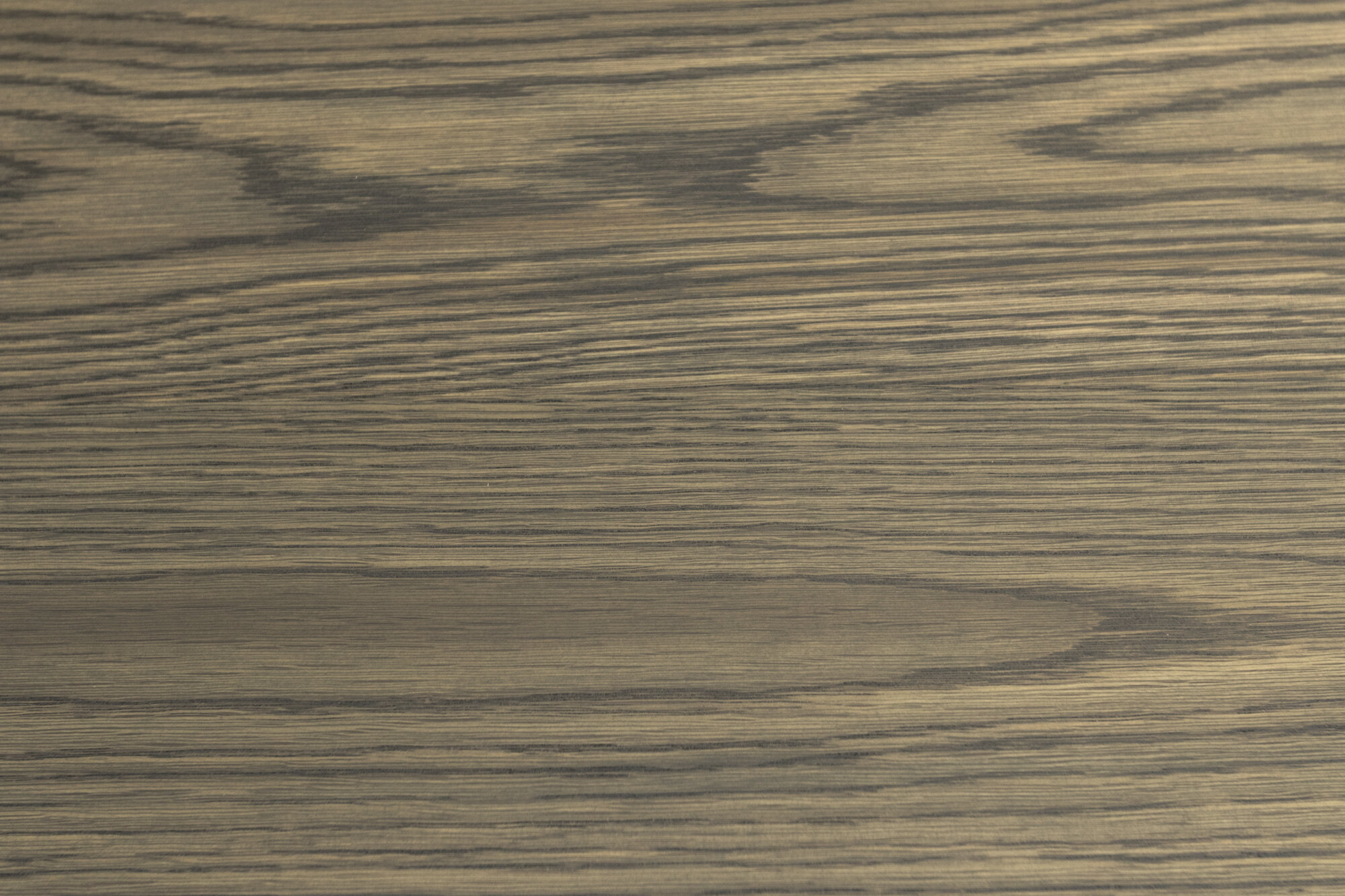
MATERIALS
We source a variety of FSC-certified domestic hardwood lumber to customize any project with different grades and finishes available. Wood species that we use most often are outlined in the sections below, with walnut and oak being amongst our most popular materials regularly available.
Our standard finished tabletop thickness is 1.5” (included in pricing on all dimensional lumber table listings, and pictured in most listing example images). We can also special order thicker material that will allow us to achieve up to a 2.5” thick tabletop upon request (pricing varying depending on tabletop dimensions, usually adding between +$900 - $2500).
Live edge and other slab-specific projects are usually finished anywhere between 1 3/4” - 2” thickness, unless otherwise requested (up to 2.5” is generally possible).
COMMON GRADE WALNUT
Common grade dimensional walnut is generally sourced from the outer most part of the tree and includes characteristics such as knots, cracks/inclusions, minimal traces of sapwood (blonde coloring) and "wild" grain patterns.
PRIME GRADE WALNUT
Prime grade dimensional walnut is generally sourced from the center-most part of the tree (the heartwood) and is considered "select" or premium, hand-picked by the wood miller for having characteristics that include few-to-no knots, little-to-no sapwood, and straighter/more mellow grain patterns.
SALVAGED SLAB WALNUT
Slab walnut is salvaged by tree removal services and milled into full slabs that span the diameter of the tree. The trees have to meet certain criteria before they are removed, including (but not limited to) dead-standing or dying/diseased trees, trees that pose hazardous conditions such as roots encroaching on home foundations or branches that are deemed dangerous, or fallen trees from wind storms or mudslides, etc.
Please note, processing slab wood takes considerably longer than a dimensional lumber table, as well as costs being much higher to source the material.
To learn more about how we source and salvage slab wood, please visit the following link by clicking on the button below:
WHITE OAK
Characteristics of white oak typically include tight, porous coarse grain patterns and light, yellowish tones. Oak wood is exceedingly strong, heavy and durable. Quartersawn sections display prominent ray fleck patterns.
ASH
Ash is a light-colored species with an open grain, a coarse texture and fairly straight patterns (similar to oak), with some color variance that can occur in the heartwood versus the lighter, blonde sapwood. It is relatively dense with good working and finishing properties, and is among one of the lesser-priced materials to work with.
CHERRY
The heartwood of cherry varies from rich red to reddish brown and will darken with age and on exposure to light. The wood has a straight-grain, a fine, uniform, satiny and smooth texture, and naturally may contain brown pith flecks.
ALDER
Alder is an attractive, close-grain species, with a nice uniform color, a fine texture, and it’s natural characteristics allow it to seamlessly integrate into a variety of building styles. A go-to material for cabinetry, bookshelves, trim, and other household projects.
“EBONIZED” OAK
Oak is a great wood for “ebonizing”, absorbing black dye beautifully for a deep, bold look. The grain texture on oak is typically very straight, tight, and porous allowing dyes to easily penetrate and absorb deeply into the wood’s surface.
“DARKWASHED” WALNUT
For a deeper, richer color we offer the option to “darkwash” the wood for a bolder effect while still allowing some of the natural character and color variation of the wood to show through. Other dye options are available as well as the application technique (lightness or heaviness of the application for different color outcomes).
ADDITIONAL EXAMPLE IMAGES - COMING SOON
RECLAIMED REDWOOD
Redwood displays a beautiful vertical grain with minimal knots, resulting in a warm and consistent appearance. Even after years of exposure to outdoor elements, redwood still maintains the natural characteristics of being resistant to water and rot, allowing for it to be used easily in exterior applications. Due to the harsher elements here in the Tahoe area, there are often opportunities to source and reclaim redwood from decking or other outdoor structures that are being replaced, which - once nails are removed and the wood is planed - the incredible weathered character of the redwood is revealed and can be reused for a number of furniture and home projects. Redwood lumber is very soft and lightweight, with a decent strength-to-weight ratio. It is also exceptionally stable, with very little shrinkage or seasonal movement. However please note that due to it’s relative softness, the wood can be more easily damaged when not properly cared for. It is recommended that when using redwood for a dining table or other furniture to expect that it can dent and scratch more easily than a hardwood, and thus to be more careful while in use, or to embrace a bit of “wear”. Expect the reclaimed nature of the wood to be prevalent, such as oxidation from nails, watermarks, and other natural occurrences that add to the character of the wood.
RECLAIMED DOUGLAS FIR
Douglas fir is another material that is primarily used for building projects, often outdoors, and weathers beautifully providing a great material for reclaimed projects. The wood is tight-grained and of the most popular softwoods possessing features that enable it to be used in tasks mostly meant for hardwoods. Significantly, its high versatility gives it an unbeatable edge over other softwoods.
We can source a variety of additional materials. Please inquire via email if you have a specific wood species in mind for your project and we can look into options and costs.

